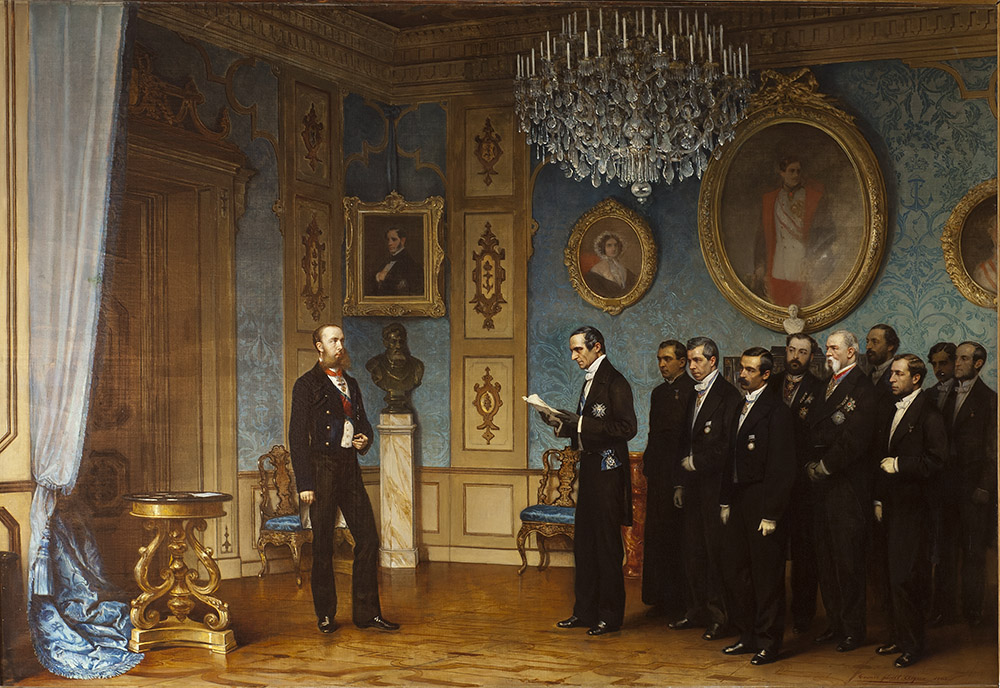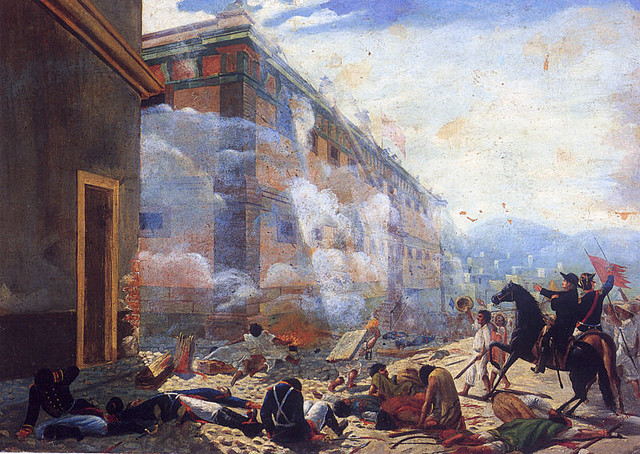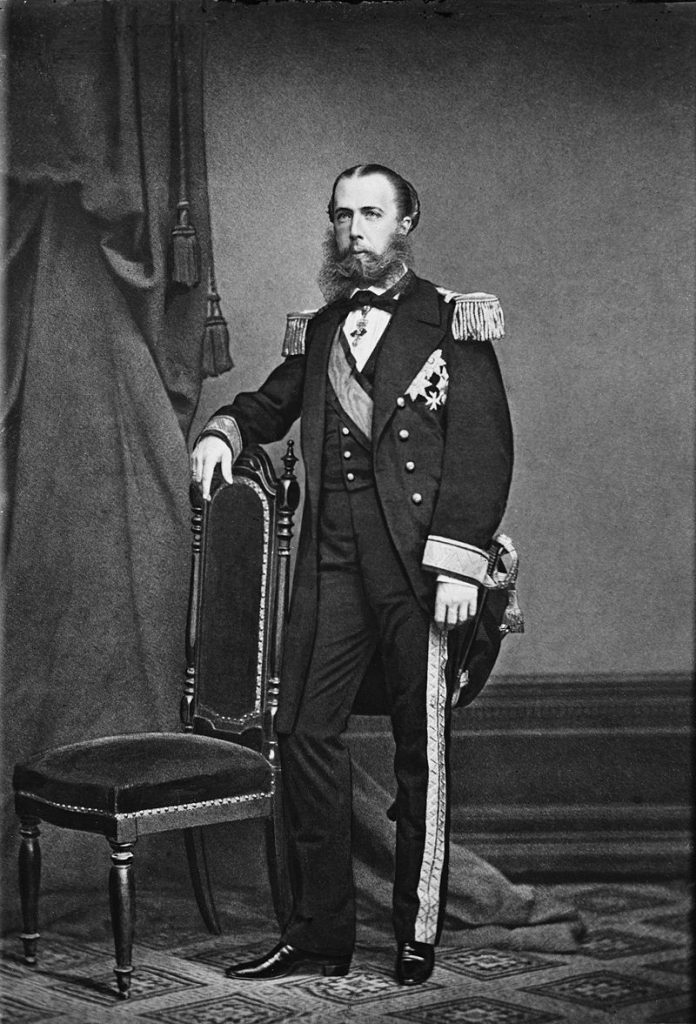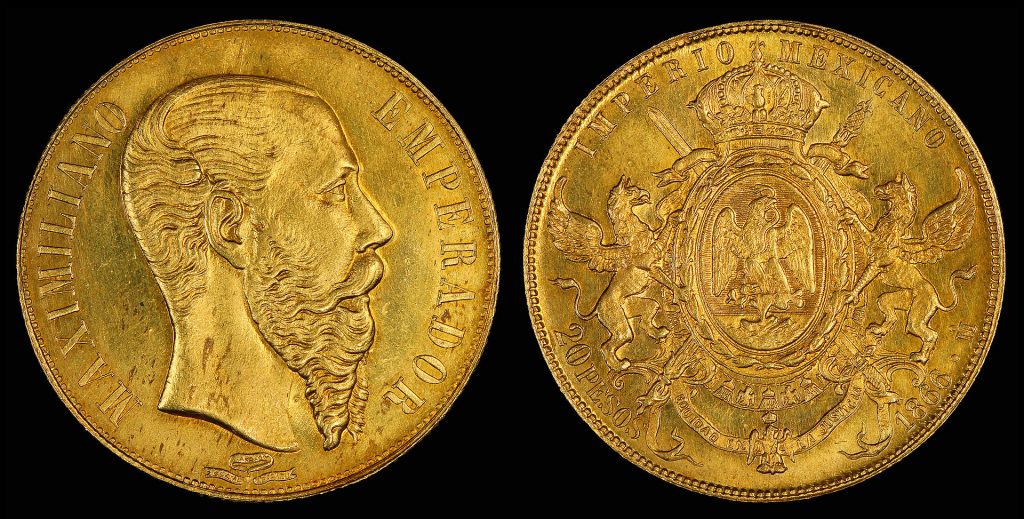
Maximilian I receiving a Mexican delegation at Miramare Castle in Trieste, by Cesare Dell’Acqua
In 1810 during the Napoleonic occupation of Spain an independence movement broke out in Mexico. At the time, there were enough Spaniards there loyal to the crown to crush the rebellion. Rather than acquiesce, the rebels kept the revolutionary fire alive – an effort supported by U.S. leaders like Henry Clay who represented the American consensus that European monarchy had no place in the New World. After attrition took its toll and the political winds changed, backing among Mexicans of Spanish blood (criollos) for European rule waned, and independence was achieved in 1821. Agustin de Iturbide, who usurped the process by proclaiming himself emperor in 1822, was forced to abdicate, and fled to Europe in 1823 in search of support.

Later that year, U.S. President James Monroe declared that European monarchy would not be permitted in the Americas – a message warmly received by leaders of the various Latin American independence movements such as Simon Bolivar. The “Monroe Doctrine” – as it was later called after 1850 – became a pillar of early U.S. foreign policy and a thorn in the sides of the monarchist powers of Prussia, Russia, and Austria – collectively known as the Holy Alliance. That alliance, which sought to restrain secular and republican-inspired movements in Europe, was later renamed the Quintuple Alliance after both France and the United Kingdom joined.
Royalists Revenge
Although Iturbide was shot in 1824 after returning from exile, royalists, who always constituted a third tier in Mexican politics, schemed for decades until the Austrian Habsburg and archduke Maximilian I was installed as emperor with French help in 1864 at the height of the U.S. Civil War.

When President Abraham Lincoln was assassinated April 14, 1865 (a couple of weeks after the Confederate Army surrendered) the new president Andrew Johnson reportedly refused to receive a letter of condolence from Maximilian. London’s Morning Post noted from the New York Herald that “An empire might hang on the answer of this seeming modest application.” The Herald pondered: “Would the [U.S.] Government fall into the trap?” Despite the gesture, President Johnson and U.S. Secretary of State William H. Seward firmly maintained the U.S. position:
They were asked to receive a letter from the Emperor of Mexico. They knew no such person and would not receive the letter. That was the answer. […] No amount of diplomatic trimming or ingenious explanation can destroy the force of this fact; and its full meaning is that not only does the Government of the United States not know such a person as the Emperor of Mexico, but can never know such a person.[1]
Despite the post-war weakness of the United States, the course was set. Johnson invoked the Monroe Doctrine, recognized former president Benito Juárez as the true leader of Mexico, and applied pressure to Napoleon III of France to withdraw French soldiers from Mexico who were propping up a monarchy that never received popular support from the Mexican people. More importantly, the U.S. clandestinely provided arms to Mexican rebels through Texas to weaken the regime. Again, insurgent warfare exacerbated the royalists.

Maximilian did his best to hold on to power, and even invited ex-Confederate soldiers to come to Mexico to create a “New Virginia Colony” to bolster his rule. When French soldiers were withdrawn, Maximilian’s support collapsed. The emperor was urged to abdicate and flee but refused and fought on until he was captured in May of 1867 after his forces succumbed to a prolonged siege of Querétaro City. Despite the pleas from foreign dignitaries Juárez refused to spare Maximilian’s life. Like Iturbide, he faced a firing squad. Ultimately, the body of the last king of the New World was taken back to Europe where it was entombed in the House of Habsburg’s Imperial Crypt in Vienna.
